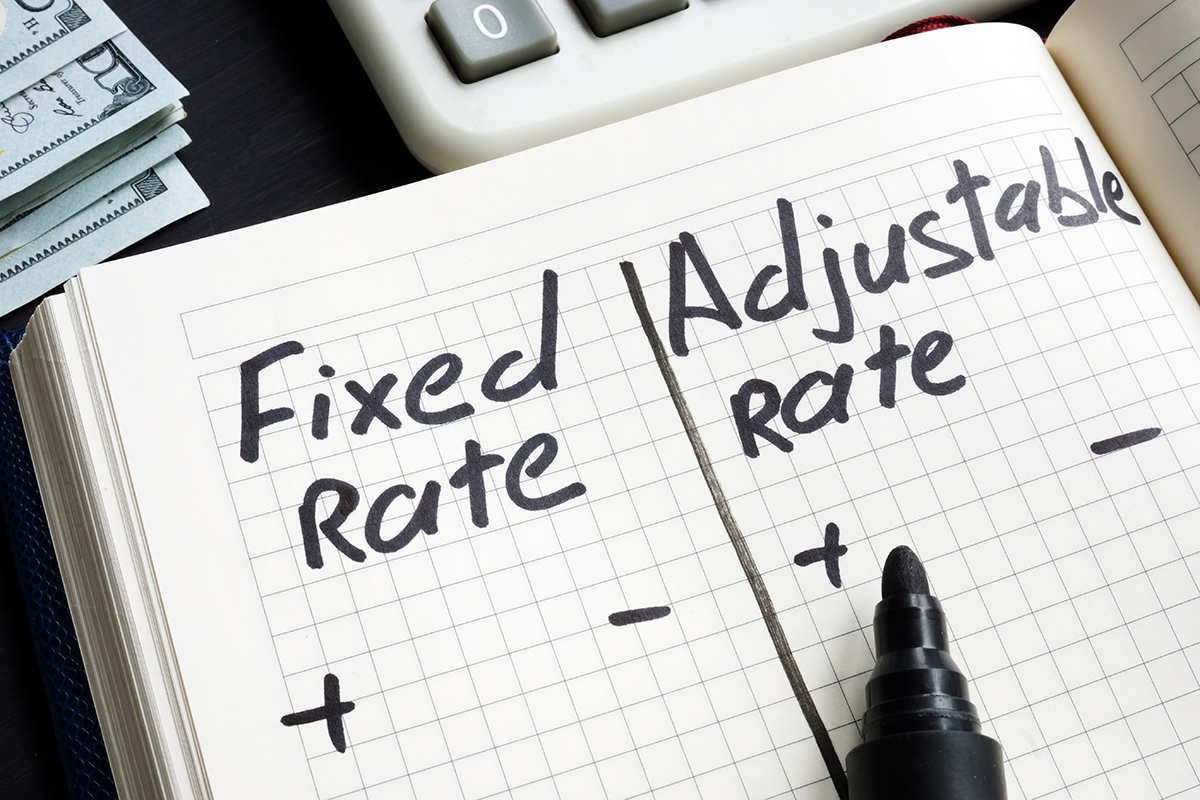Options to Structure Your Home Mortgage

We are in home buying season, with the majority of purchases occurring during the spring and summer. We have previously discussed home buying considerations for new physicians with detailed important factors to consider throughout the home buying process. This article will focus on the financing side of becoming a homeowner.
You have been approved for your mortgage, made an offer and it has been accepted! Now, what are your options for structuring your mortgage?
The components of all mortgages are referred to as "PITI" – principal, interest, property taxes, and homeowners insurance. As taxes and insurance are the same independent of your mortgage type, we will focus on how your mortgage structure affects the principal and interest components.
All mortgages are amortized, meaning your principal and interest payments are spread out with regular payments over the loan term. Our following examples look at a $500,000 home bought with a 10 percent down payment and a resulting $450,000 mortgage balance.
30-Year Fixed – These are simply 360 monthly payments with a fixed interest rate. You know exactly what your principal and interest payments will be each month (though your total payment may vary a little due to changes in property taxes or homeowners insurance).
They do not have any interest rate risk and can be a good option if you wish to keep your payments fairly low and may be owning this home for many years.
If your 30-year fixed mortgage were at 4.25 percent, then your principal and interest payments would be $2,214 a month (calculated on an amortization table).
15-Year Fixed – These are similar to 30-year fixed loans, but you are compressing your payments into half the time. They tend to have slightly lower interest rates, but higher overall payments due to paying down the principal at an accelerated pace.
A 15-year fixed mortgage at 3.75 percent results in $3,273 in monthly principal and interest. While this will save you quite a bit of interest, you must also consider the opportunity cost, or tradeoff, of applying $1,000 more toward your mortgage each month as opposed to other goals, such as saving for retirement or your child's college.
7-1 ARM Adjustable-Rate Mortgages (ARMs) –ARMs are exactly as they sound – their interest rate adjusts after an initial fixed-rate period. ARM rates are generally lower than a 30-year fixed for the initial period, but are also amortized over 30 years.
For example, a 7-1 ARM is fixed at 3.50 percent for the first seven years of payments, but at the beginning of the 8th year (85th monthly payment), the rate becomes variable and may adjust up or down, depending on the interest rate environment.
Prior to the 2008 Financial Crisis, ARMs were a much different product and could have interest rates skyrocket after a much shorter two- or three-year fixed rate period.
Today, ARMs generally have interest rate limits, such as a 2 / 2 / 6 cap. Continuing the example, the most the interest rate could adjust upward at the start of the 8th year is 2 percent (first 2) to 5.50 percent, which would increase your monthly payments. It can then adjust upwards another 2 percent each subsequent year (second 2) up to a maximum of 6 percent above the initial 3.50 percent to a maximum rate of 9.50 percent.

We want to be very clear here – there is risk if you hold your mortgage past the fixed rate period due to the possibility of higher interest rates causing higher payments.
ARMs are often not the best fit for a long-term home bought in 2019's low rate environment, but what about a starter home? If you are confident of not owning this home after the 7-year fixed rate period, then we do not care about the last 23 years of the mortgage.
A 7-1 ARM at 3.50 percent will have monthly principal and interest payments of $2,021, resulting in $22,984 less in interest paid over 7 years ($274 a month) compared to a 30-year fixed mortgage (due to the lower rate and because interest is mostly concentrated in the first half of a mortgage).
Homeowners who wish to have an additional three years of fixed rates may consider a 10-1 ARM.
Your mortgage will be a large monthly payment for many years, so you owe it to yourself to consider all options for how to structure it. The type of mortgage that will be most appropriate for your home will depend on several factors, including estimated homeownership length and your cash flow.


